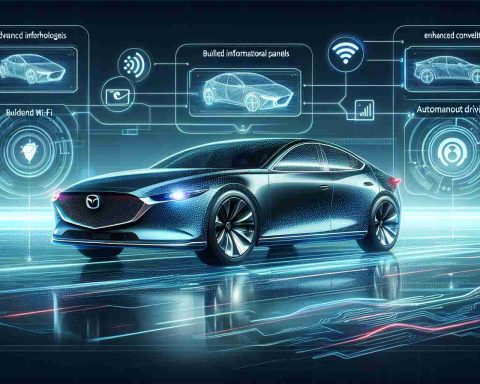- Porsche leads the EV industry with a pilot project focused on recycling high-voltage batteries.
- The initiative addresses the demand for critical elements like nickel, cobalt, manganese, and lithium through mechanical shredding.
- Recycled elements are extracted from “black mass” to ensure purity and uphold Porsche’s performance standards.
- Porsche aims for future batteries to have significant recycled content, aligned with its circular economy vision.
- The project prepares Porsche for the upcoming EU battery regulations requiring increased recycled content by 2031.
- By embracing proactive resource stewardship, Porsche enhances its reputation in sustainable automotive design.
- Porsche’s effort exemplifies the synergy between luxury motoring and environmental responsibility.
Porsche is charting a new course in the EV industry with an innovative pilot project that promises to revolutionize how we think about electric vehicle batteries. In a world increasingly concerned with sustainability and resource scarcity, the luxury carmaker is seizing the initiative by focusing on recycling high-voltage batteries through an intriguing process, setting a new standard in automotive responsibility.
The company’s initiative boldly addresses the urgent demand for securing long-term supplies of crucial elements such as nickel, cobalt, manganese, and lithium. These elements, essential for the robust performance of electric vehicles, are extracted through an intricate mechanical shredding operation. This method transforms exhausted batteries from development vehicles into a mysterious but valuable substance known as “black mass.” With around 65 tonnes of this raw granulate produced so far, Porsche is pushing boundaries in resource recovery.
The journey of “black mass” does not end here. This mysterious material undergoes further processing designed to tease out pristine elements essential for the next generation of batteries. Porsche emphasizes that ensuring the purity and consistency of these recycled materials is not just a goal but a necessity. These elements are meticulously refined to meet the brand’s high standards, ensuring that the new battery cells uphold Porsche’s legendary performance and quality criteria.
Looking ahead, Porsche envisions a future where significant portions of new batteries comprise recycled content. The plan is phase three of this progressive project, aiming for real-world testing in forthcoming models. This ambitious target underscores Porsche’s dedication to embedding a circular economy approach within its sustainability strategy, as stated by Barbara Frenkel, Executive Board Member for Procurement. Through this closed-loop vision, Porsche intends to diminish environmental impacts, secure essential supplies against possible geopolitical challenges, and stay ahead of the curve in compliance with looming regulatory demands.
Anticipating the strict EU battery regulations slated for 2031, which will require increased recycled content and traceability, Porsche’s early adoption of this recycling project marks its commitment to proactive resource stewardship. By embracing this strategic foresight, Porsche not only secures its future material supply chain but also bolsters its reputation as a leader in sustainable automotive design.
In a rapidly changing automotive landscape, Porsche’s pioneering project reveals the possibility that lies at the intersection of luxury motoring and environmental mindfulness. The company’s efforts stand as a testament to what can be achieved when innovation meets responsibility, setting a formidable benchmark for the entire industry.
Porsche’s Battery Breakthrough: How Recycling Could Transform the Future of EVs
Introduction
Porsche is pivoting within the electric vehicle (EV) industry by introducing a game-changing approach to battery recycling. Amid escalating concerns about sustainability and resource scarcity, the luxury automaker is steering towards a future where electric vehicle batteries are not just used but reused. This initiative not only promises to enhance the sustainability of Porsche’s vehicles but also sets a precedent for the automotive industry as a whole.
How The Process Works
1. Battery Decommissioning: Once the batteries from development vehicles reach the end of their life cycle, they undergo a mechanical shredding operation. This method helps break down the batteries into smaller, reusable components.
2. Creation of “Black Mass”: Through shredding, exhausted batteries are transformed into a substance known as “black mass.” This granulate form is a concentrated mixture of valuable materials like nickel, cobalt, manganese, and lithium.
3. Extraction of Elements: Porsche employs a complex process to extract and purify these elements from the black mass. The goal is to achieve high purity and consistency, essential for maintaining Porsche’s quality standards.
4. Reuse in New Batteries: These refined elements will be used to produce new battery cells, upholding the performance associated with the Porsche brand. The focus is on creating batteries comprising significant portions of recycled content.
Real-World Use Cases
– Sustainability: The recycling of battery components helps address resource scarcity and reduces environmental impacts associated with mining new materials.
– Cost Efficiency: Recycling reduces dependency on raw material acquisition, likely leading to cost benefits in battery production over time.
– Supply Chain Security: By recycling essential materials, Porsche mitigates risks associated with geopolitical uncertainties affecting raw material supplies.
Industry Trends and Forecasts
– Growing Demand for Recycled Materials: As the automotive industry trends towards electrification, demand for sustainable practices like battery recycling will grow.
– Emerging Regulations: The EU’s upcoming battery regulations in 2031 emphasize the need for increased recycled content, illustrating a regulatory push towards sustainable manufacturing practices.
Controversies and Limitations
– Technological Challenges: The recycling process of EV batteries is complex and currently costly, requiring further technological advancements to enhance efficiency.
– Market Adoption: Full implementation across the industry will need substantial investment and collaboration from various stakeholders.
Pros & Cons Overview
Pros:
– Enhances sustainability through resource recycling.
– Reduces environmental impacts and improves supply chain resilience.
– Sets a benchmark for luxury automotive brands in responsible manufacturing.
Cons:
– High initial costs associated with recycling technology investments.
– Requires ongoing innovation to remain economically viable.
Actionable Recommendations
1. For Porsche Owners: Stay updated with how advancements in recycled batteries can potentially enhance your vehicle’s longevity and performance.
2. Industry Stakeholders: Collaborate with pioneering companies like Porsche to learn best practices in battery recycling and adaptation to regulatory shifts.
3. Consumers: Consider the sustainability practices of automotive brands when deciding on an EV purchase. Playing an active role in sustainable choices can accelerate positive industry changes.
For more insights into Porsche’s innovations and their impact on the EV market, visit the official Porsche website.
Conclusion
Porsche’s innovative battery recycling project underscores the potential of turning ecological challenges into opportunities. By seamlessly integrating sustainability with luxury, Porsche is setting a new industry standard — one where performance and responsibility go hand in hand. With foresight and commitment, Porsche could redefine how the automotive industry approaches resource management, ensuring a greener future for generations to come.


















